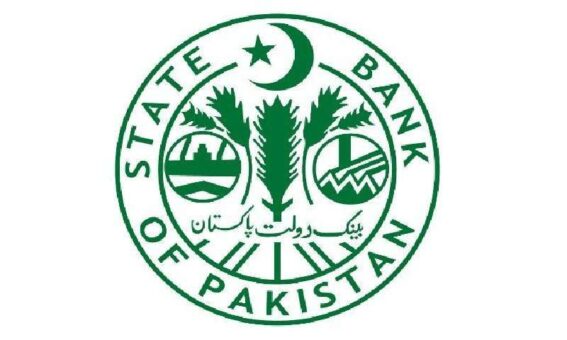Karachi, April 29, 2024 – The State Bank of Pakistan (SBP) has decided to maintain its benchmark policy rate at 22 percent, the bank’s Monetary Policy Committee (MPC) announced after its meeting today.
This decision of unchanged policy rate reflects the committee’s cautious optimism about the country’s economic recovery and its ongoing efforts to tame high inflation rates.
The SBP stated that the stabilization measures implemented thus far are showing signs of success, citing improvements in inflation levels and the country’s external financial position, alongside a moderate economic recovery. Despite these positive indicators, the Committee expressed concerns about persistently high inflation and uncertain global economic conditions influenced by recent geopolitical events and commodity price stability.
Economic Developments Influencing the Decision
According to the SBP, over the last review period, several key economic indicators have guided the MPC’s decision to maintain the current interest rate:
• The economy is experiencing a moderate recovery, forecasted to achieve a real GDP growth rate of 2 to 3 percent for the fiscal year. This is primarily driven by a 6.8 percent growth in the agriculture sector during the first half of the fiscal year, boosted by notable increases in the production of major crops like rice, cotton, maize, and wheat.
• Industrial and services sectors showed mixed results, with a slight decline in large-scale manufacturing offset by lower-than-expected growth in services. However, improved capacity utilization and positive business sentiments are expected to support a recovery in these sectors in the upcoming months.
• A significant reduction in the current account deficit, which narrowed by 87.5 percent to $0.5 billion during July-March FY24 compared to the previous year, was supported by a strong surge in workers’ remittances in March and a decline in imports due to better domestic agricultural output and subdued demand.
External and Fiscal Sectors
The external sector has outperformed expectations, posting a substantial current account surplus of $619 million in March 2024, mainly due to increased remittances linked to the Eid festival. This has helped stabilize the SBP’s foreign exchange reserves despite substantial debt repayments and weaker financial inflows. However, the MPC stressed the importance of further building the foreign exchange reserves to better respond to external shocks and support sustainable economic growth.
Fiscally, the government has made strides toward consolidation, achieving a primary surplus of 1.8 percent of GDP in the period from July to January FY24. This is up from 1.1 percent in the same period last year, driven by increased revenue collection and some restraint on non-interest expenditures. Nevertheless, the overall deficit widened slightly due to higher interest payments on the government’s domestic borrowing.
Inflation and Monetary Aggregates
Inflation has shown a downward trend in the second half of the fiscal year, with headline inflation decreasing to 20.7 percent year-on-year in March from 23.1 percent in February. Core inflation also fell significantly. The decrease is attributed to coordinated monetary and fiscal policies, lower global commodity prices, and improved food supplies.
Monetary aggregates expanded, with broad money (M2) growth increasing to 17.1 percent year-on-year in March, primarily due to an expansion in net foreign assets and increased net budgetary borrowing from commercial banks. However, private sector credit has continued to decelerate.
Looking Ahead
Despite the positive trends, the MPC acknowledged the presence of inflationary risks stemming from potential volatility in global oil prices, the resolution of circular debt in the energy sector, and impacts of tax-driven fiscal consolidation. Given these uncertainties, the Committee deemed it prudent to uphold the current monetary policy stance, emphasizing that the real positive interest rates remain significant.
The decision of SBP reflects a strategic balance between supporting economic recovery and continuing inflation control measures. As the country moves toward the upcoming budget announcements, all eyes will be on how these fiscal adjustments align with the broader goal of achieving a stable and sustainable economic environment. The MPC remains committed to adjusting its policy stance as needed to navigate the complex economic landscape facing Pakistan today.
